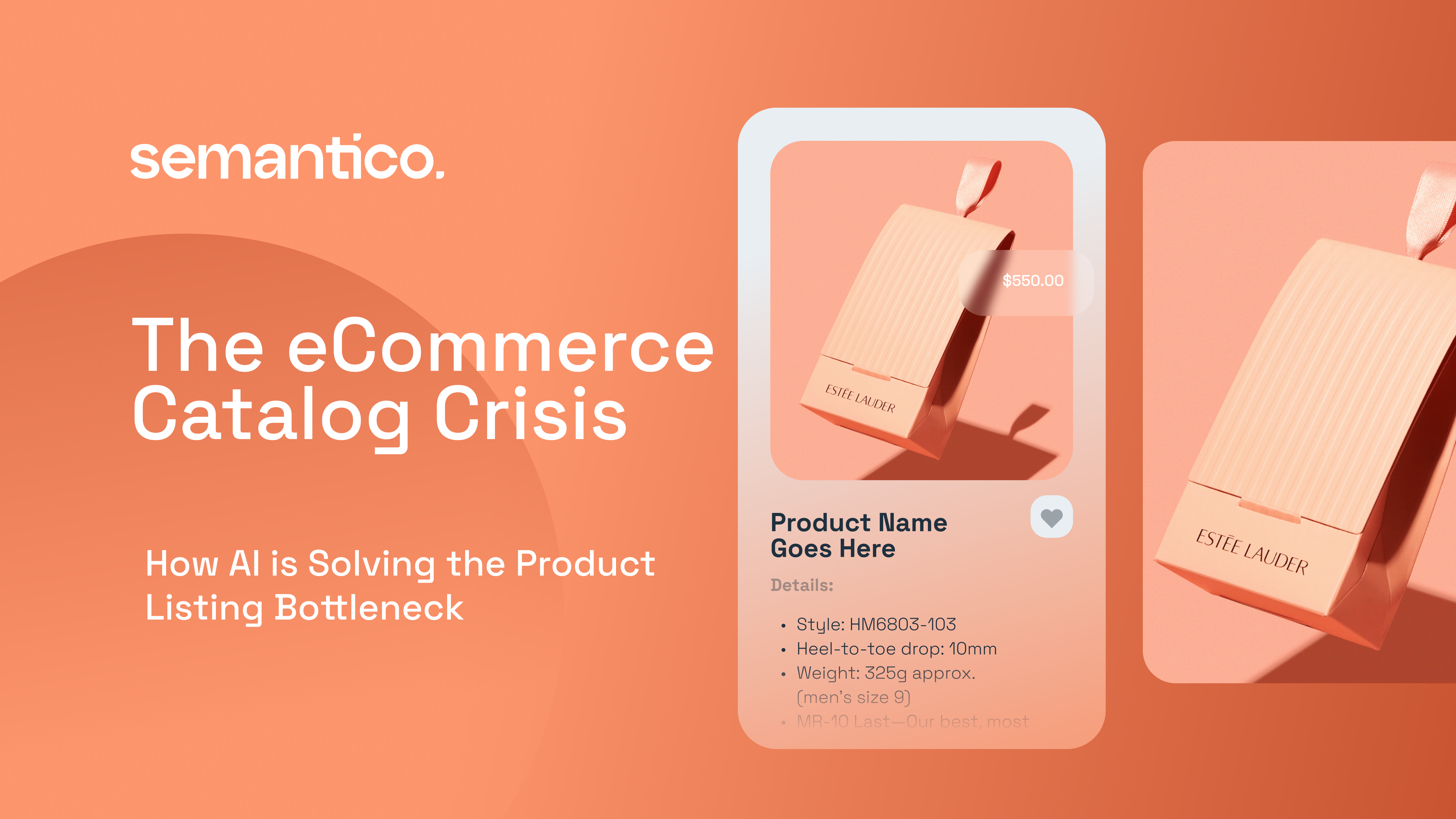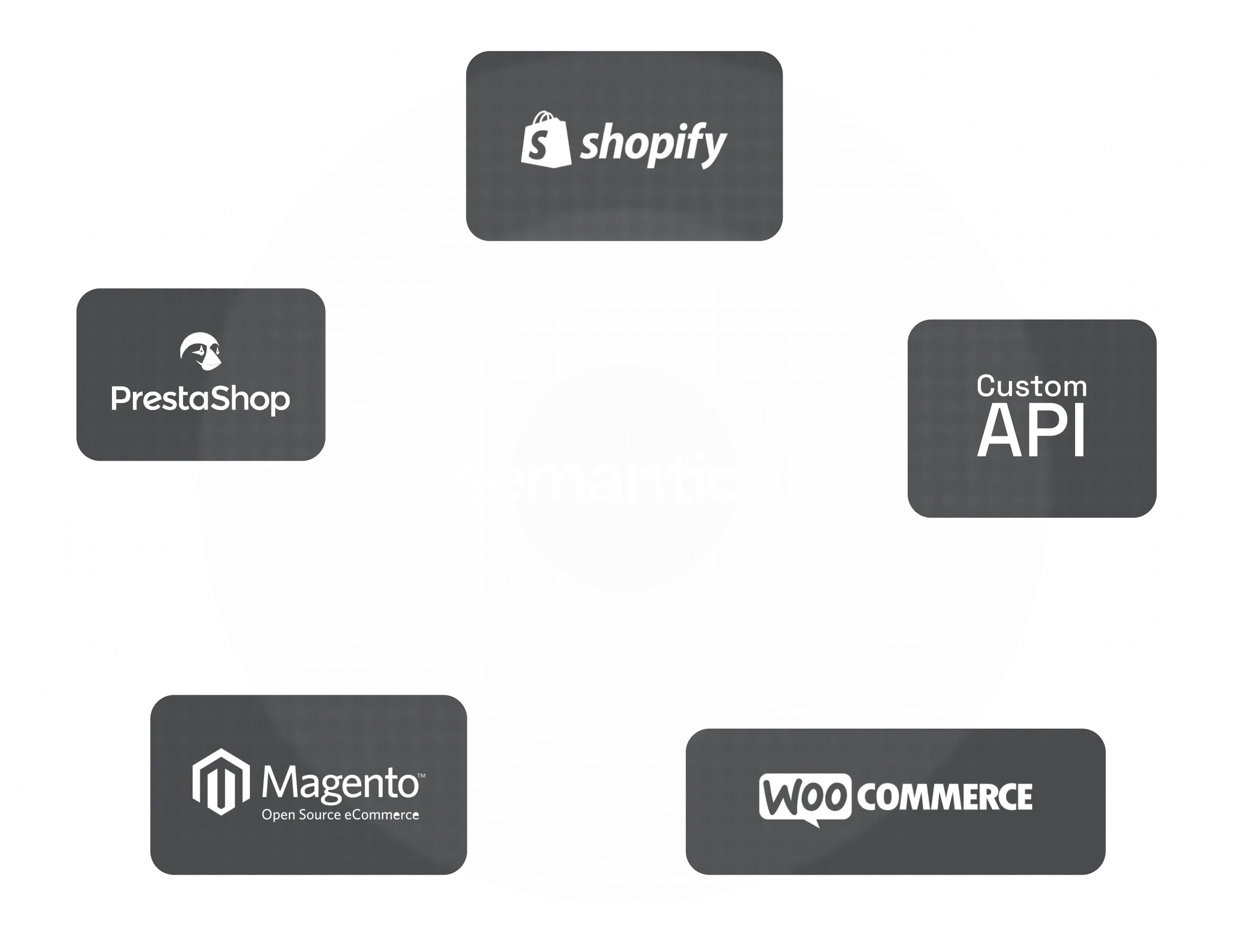The hidden bottleneck that's bleeding revenue from your e-commerce business
Shoppers move fast, but product catalogs often lag behind. Taking a new item from "we have this SKU" to "it's live, complete, and ranking" remains a slow crawl through spreadsheets, copy-pasted text, and guesswork SEO.
Every new product, variant, or market multiplies the workload. The result? Listings go up late or with inconsistent details; attributes don't match across channels; translations drift off-brand; images and metadata underperform—ultimately leaking traffic and conversions that you've already paid for through marketing.
This manual, fragmented process is a major bottleneck to growth—one that begs for a better solution.
The High Cost of Going Slow
Slowness in listing products carries a hefty price. One ecommerce seller observed that each product listing—writing titles, descriptions, adding images, specs, SEO tags, etc.—can take 5 to 10 minutes even with an efficient workflow.
At that pace, launching 8,000 SKUs means about 80,000 minutes of labor (~1,300 hours). In practice, even teams of content specialists spend an enormous amount of time just to get products online.
Every hour spent wrestling with product content is an hour not spent on strategy, marketing, or innovation.
More critically, delays in publishing products directly translate to lost sales opportunities. If a product misses the market window by weeks or months, competitors seize the advantage.
According to McKinsey, entering the market six months late can cut a product's revenue potential by 33%. In ecommerce terms, every day a product isn't live is a day of zero sales for that item—fewer selling days and lost momentum in search rankings.
The bottom line: slow listing not only burns employee hours, it also means real revenue left on the table.
AI and the Turning Point for Product Content
The good news is that recent advances in AI offer a way out of this catalog chaos. AI is finally good at product semantics—with just a single reference point (like a SKU, EAN, or a basic title), modern AI models can infer a product's category, key attributes, and even generate rich description content with surprisingly solid accuracy.
In other words, an AI can take a minimal input and produce a draft listing that's perhaps 80% complete in a matter of seconds. Instead of a human writer starting from scratch, the AI provides a comprehensive first pass—complete with structured titles, bullet points, descriptions, and even SEO-friendly elements.
Crucially, AI can do this at scale and enforce consistency. The AI doesn't forget to include a detail or drift in tone: it applies a consistent structure, tone, and SEO scaffolding across every item.
Teams that harness this capability "don't just type faster; they publish smarter," achieving:
- Same-day product launches
- Consistent attributes across languages and channels
- SEO optimization built in from the moment of upload
Early adopters of AI-driven listing tools are able to push more SKUs live faster, expand into new markets more seamlessly, and climb search results through sheer freshness and relevance of content.
Meanwhile, competitors sticking to manual methods risk falling behind—if you fall a quarter behind on content, you're suddenly compounding a deficit in both sales and search algorithms.
A New Approach: The Semantic AI Catalog
What ecommerce teams need now is a unified system that understands products and automates the heavy lifting of listing creation. Instead of patching together a PIM, spreadsheets, and manual copywriting, forward-thinking brands are moving toward what we can call a Semantic AI Catalog—a single platform to create, enrich, localize, publish, and optimize product content with AI assistance and human oversight.
In this model, much of the grunt work is handled by the machine, while humans focus on reviewing and refining the output for accuracy and brand fit.
Semantico is one example of this approach. It acts as the "semantic engine" for your catalog, turning a simple product reference into a complete, ready-to-publish listing—and then some.
With an AI-powered catalog platform like this, you can drastically cut down the time and effort per SKU. Key capabilities include:
Automated Listing Generation
Feed in what you have (even if it's just an SKU or a rough product name) and get a drafted product page. The AI pulls in or generates titles, descriptions, and even high-quality images, giving you a rich starting point in seconds.
Categorization & Data Standardization
The system automatically classifies each product into the right category and normalizes attributes (names, values, units) across your entire catalog. This ensures clean, consistent data everywhere without manual mapping.
Instant Localization
Need to launch in a new country? AI can translate and localize your product descriptions into multiple languages on the fly, all while keeping tone and terminology consistent with your brand voice. No more copy-paste between translation sheets.
Built-in SEO & Pricing Insights
Every listing comes with SEO best practices baked in—from optimized titles and meta descriptions to keyword-integrated copy—so pages are search-friendly from day one. Some platforms even suggest pricing ranges or adjustments based on market data, helping you hit the market with competitive prices.
One-Click Publishing
Finally, you can push the polished listing directly to your ecommerce platform(s) (Shopify, WooCommerce, Magento, Amazon, etc.) with proper format and field mappings. This eliminates error-prone CSV imports or re-entry and gets products live faster on every channel.
In short, the Semantic Catalog OS approach automates the end-to-end listing workflow. The tedious parts (researching product details, writing copy, formatting specs, resizing images, etc.) are handled by AI, while your team approves and tweaks the output.
The end result is clean, consistent, enriched product listings ready to go live everywhere you need them.
Faster Listings, Better Business
Adopting an AI-driven catalog platform yields immediate, measurable improvements. Teams often start tracking new metrics like time-to-listing—how long it takes from having a product reference to having it live.
With automation, this can shrink from weeks to hours, or even achieve a same-day listing turnaround for most SKUs.
Another key metric is publish velocity per person: an operator who might manually list a handful of products per day can now oversee dozens per day. In fact, businesses see 3–5× more SKUs published per team member once creation and enrichment are automated.
The Bottom Line Impact
Data quality improves as well. Consistency approaches 100% for critical fields when attributes are auto-normalized and centrally managed. SEO readiness becomes near-universal, meaning every page goes out with proper titles, metadata, and structured content rather than only the few pages a team had time to optimize.
Faster expansion is another benefit—adding a new language or channel becomes a minor configuration change instead of a major copywriting project, slashing the time to enter new markets (often from months to just days).
All of these improvements hit the bottom line:
- Products get listed faster, so they start selling and ranking sooner
- Content quality and consistency go up, leading to better customer experience—which means higher conversion rates and fewer returns due to misinformation
- Your team frees up thousands of hours to focus on strategy, merchandising, and creative work instead of drudgery
In effect, an AI-powered Semantic Catalog OS turns product listing from a tedious bottleneck into a competitive advantage. Brands that embrace this approach can move faster, sell more, and deliver a richer, more reliable shopping experience—all while saving time and effort for the things that really grow the business.
Ready to Transform Your Catalog?
The manual catalog creation era is ending. The question isn't whether AI will transform product listing—it's whether you'll be among the first to harness its power or among the last to catch up.
See Semantico in action or start your free trial.
Follow us on LinkedIn or X for the latest in AI-powered ecommerce automation.





